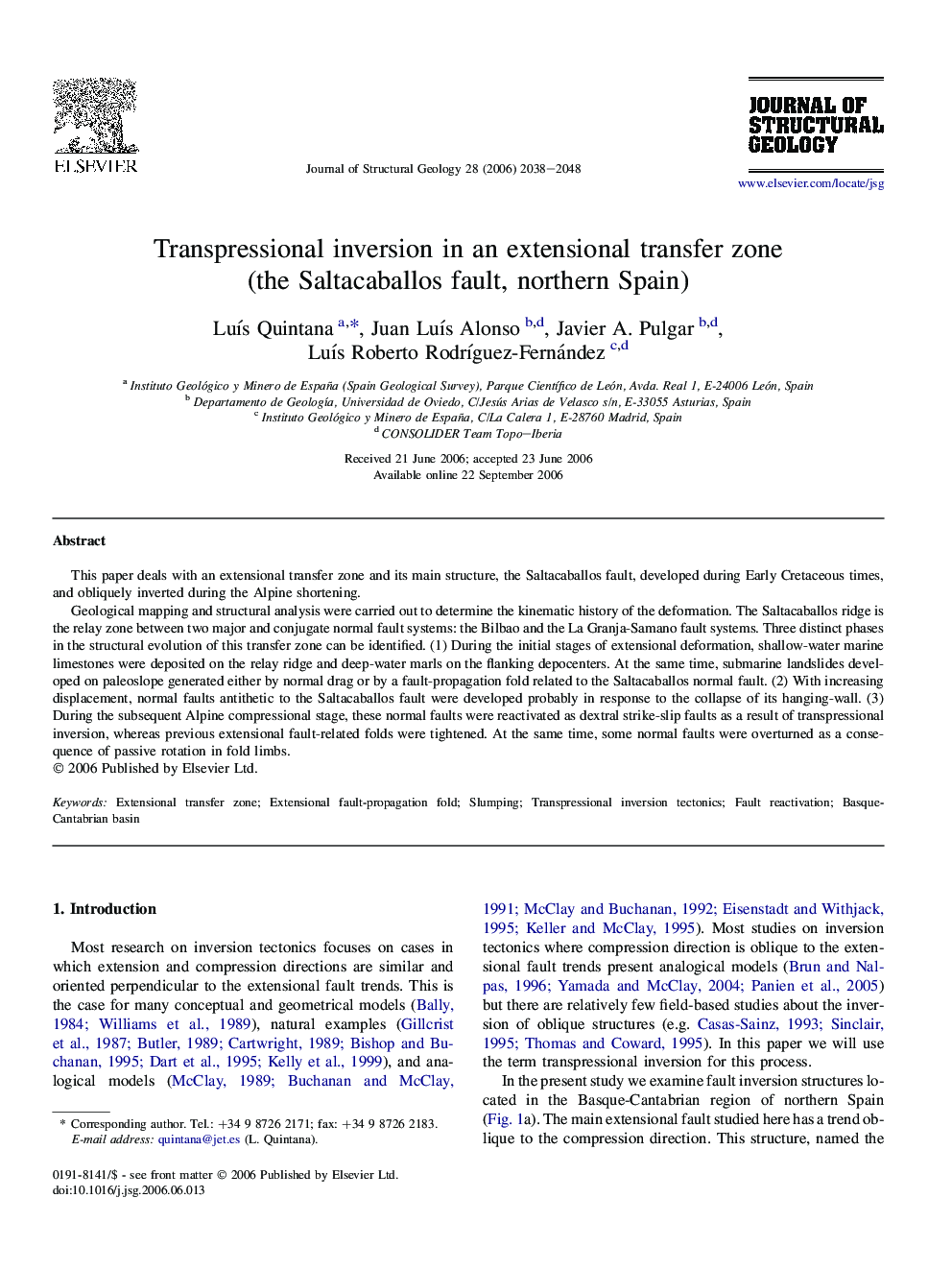| Article ID | Journal | Published Year | Pages | File Type |
|---|---|---|---|---|
| 4734490 | Journal of Structural Geology | 2006 | 11 Pages |
This paper deals with an extensional transfer zone and its main structure, the Saltacaballos fault, developed during Early Cretaceous times, and obliquely inverted during the Alpine shortening.Geological mapping and structural analysis were carried out to determine the kinematic history of the deformation. The Saltacaballos ridge is the relay zone between two major and conjugate normal fault systems: the Bilbao and the La Granja-Samano fault systems. Three distinct phases in the structural evolution of this transfer zone can be identified. (1) During the initial stages of extensional deformation, shallow-water marine limestones were deposited on the relay ridge and deep-water marls on the flanking depocenters. At the same time, submarine landslides developed on paleoslope generated either by normal drag or by a fault-propagation fold related to the Saltacaballos normal fault. (2) With increasing displacement, normal faults antithetic to the Saltacaballos fault were developed probably in response to the collapse of its hanging-wall. (3) During the subsequent Alpine compressional stage, these normal faults were reactivated as dextral strike-slip faults as a result of transpressional inversion, whereas previous extensional fault-related folds were tightened. At the same time, some normal faults were overturned as a consequence of passive rotation in fold limbs.
